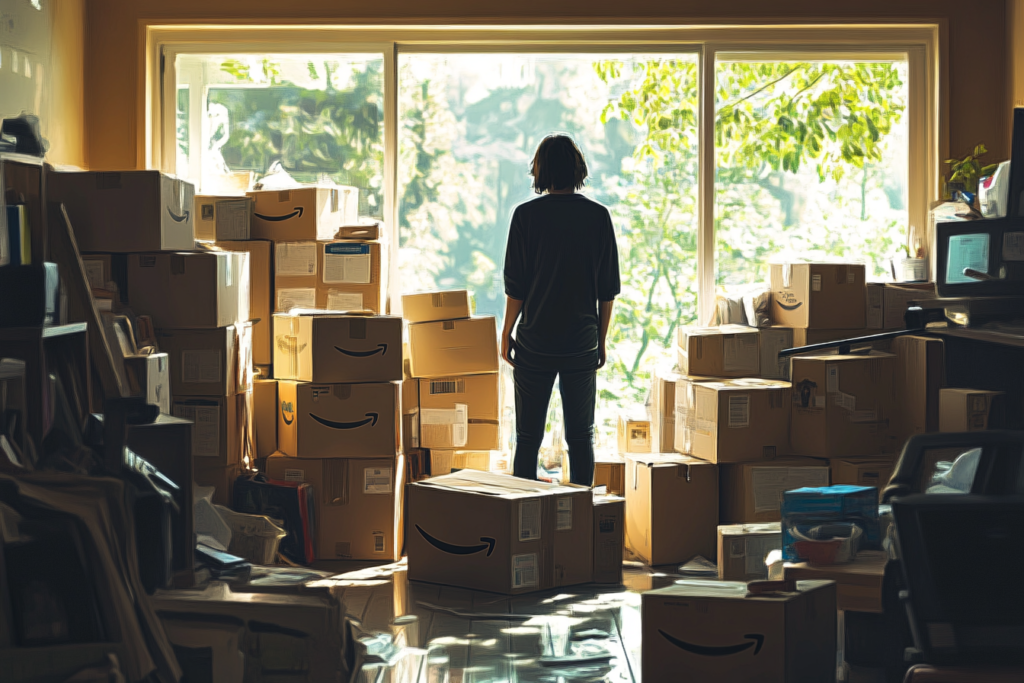I used to think I was a smart Amazon shopper. I’d compare a few listings, skim through reviews, and make sure I was getting the “best deal.” But after years of impulse buys, disappointing products, and spending more than I should have, I started noticing the Amazon shopping mistakes that were costing me money. One of the biggest Amazon shopping mistakes people make is not recognizing these pitfalls.

The reality is, Amazon isn’t just an online store. It’s a carefully designed machine that plays on psychology, urgency, and convenience to make you buy more. Sellers have figured out how to game the system, and if you’re not paying attention, it’s easy to fall for fake discounts, misleading badges, and hidden costs.
Here’s how I’ve learned to shop smarter on Amazon and how you can avoid wasting money on bad purchases.
The Bestseller Badge: More Sales, Not More Quality
A while ago, I bought a power bank on Amazon. It had that shiny green “Bestseller” tag, thousands of positive reviews, and a limited-time discount. It looked like an easy win. If that many people were buying it, it had to be good.
For the first few days, everything seemed fine. Then the battery started draining faster than it should. A week later, it got so hot while charging that I thought it might explode. By the end of the month, it stopped working entirely. That’s when I realized I had been fooled by the bestseller illusion.

Amazon doesn’t give that badge based on quality. It’s purely about sales volume. If a product sells more than others in its category within a short time, it gets the tag. That’s why some sellers artificially inflate their sales by offering huge discounts or even buying their own products in bulk. Once they gain traction, they quietly raise the price while keeping the badge.
After that experience, I stopped trusting the bestseller label. Now, I always compare brands, check multiple sources, and read recent reviews instead of just the top ones. If I see a flood of five-star ratings from the same week, I know something isn’t right. It takes an extra minute, but it’s the difference between buying something reliable and throwing money away. This way, I avoid very common Amazon shopping mistakes.
The Free Shipping Illusion: Spending More to “Save” Money
I used to think I was outsmarting Amazon by adding an extra item to hit the free shipping threshold. Why pay for shipping when I could just buy something useful?
One time, my cart was at $23.99, and free shipping started at $25. Instead of paying the $3.99 shipping fee, I added a pack of novelty sticky notes for five dollars. That was three years ago. The sticky notes are still sitting in a drawer, unopened.

The trick is that Amazon relies on this behavior. Many sellers increase product prices and offer “free shipping” to make their listings more attractive. A $10 item might be listed for $15 with “free shipping,” even though you’re paying the same price in the end. I started checking sites like Walmart or using price comparison tools, and I quickly realized that free shipping isn’t always free.
Now, before I fall for it, I compare the total cost across different platforms. If I see a seller boosting the price just to add free shipping, I know I’m better off looking elsewhere.
Fake Reviews: The Biggest Amazon Shopping Mistakes
One of the hardest things about shopping on Amazon is figuring out if the reviews are real. A product might have thousands of five-star reviews, but that doesn’t mean they’re legitimate.
I learned this the hard way when I bought a coffee maker with nearly perfect ratings. Every review said it was “amazing,” “best purchase ever,” and “totally worth it.” When it arrived, I realized it was just a hot water dispenser not even a real coffee machine.

That’s when I found out about review farms. Some sellers pay for fake reviews, while others send customers free products in exchange for five-star ratings. A lot of these fake reviews sound generic, like “great quality” or “fast shipping.” Another red flag? If dozens of five-star reviews appear in one day, it’s likely part of a paid campaign.
Now, before trusting a product, I scroll past the top reviews and look for the most recent ones. I also check the three-star and one-star reviews that’s usually where people tell the truth.
Lightning Deals: The Pressure to Buy Now
If you’ve ever bought something from a Lightning Deal, you probably felt that rush of urgency. I know I have. Seeing the countdown timer, the “Only 5 left in stock!” message, and the percentage claimed makes it feel like if you don’t buy right now, you’re missing out.
The problem is, most Lightning Deals aren’t actually good deals. Many of these items get discounted all the time, and the “limited stock” warning is often a tactic to trigger impulse purchases.

I once bought an electric jar opener during a flash sale. Did I need it? Not at all. But the discount made it feel like an opportunity I couldn’t miss. A few months later, I saw the same product for the same price—no sale, no urgency, just clever marketing.
Now, before buying a Lightning Deal, I check the product’s price history using CamelCamelCamel. If I see that the “discounted” price is actually the normal price, I skip it.
The Trap of Subscribe & Save
Amazon’s Subscribe & Save feature looks like a smart way to save money on things you buy regularly. The problem? It’s way too easy to accumulate stuff you don’t need.
At first, I used it for essentials like shampoo and toothpaste. Then I added some snacks, cleaning supplies, and a few random items that “seemed like a good deal.” Before I knew it, I had boxes arriving every month half of which I didn’t even use.

Amazon counts on people forgetting to cancel subscriptions. The worst part is that the discounts often disappear after a few months, so you end up paying full price without realizing it.
I’ve since gone through my subscription list and canceled anything that isn’t truly necessary. Now, I only subscribe to items I know I’ll use regularly.
How to Shop Smarter on Amazon
Amazon makes it easy to shop, but it also makes it easy to waste money. The key to avoiding these traps is awareness. Before buying, I always ask myself a few things:
- Am I buying this because I need it, or because it looks like a good deal?
- Have I checked other websites to compare the total price?
- Are the reviews legitimate, or do they seem too good to be true?

And as you know, one of the ways I use the most is Facebook groups. When you find quality Facebook groups that share coupons and clearance products, save them and try to follow them daily. You can see many coupons that work and don’t. If you use the ones that are most useful to you, you can make a large monthly profit.
Once I started questioning my purchases, I stopped falling for these Amazon shopping mistakes. I still shop on Amazon, but I do it on my terms not theirs. For a deeper shift in mindset, check out why sometimes the best deal is buying nothing at all.
